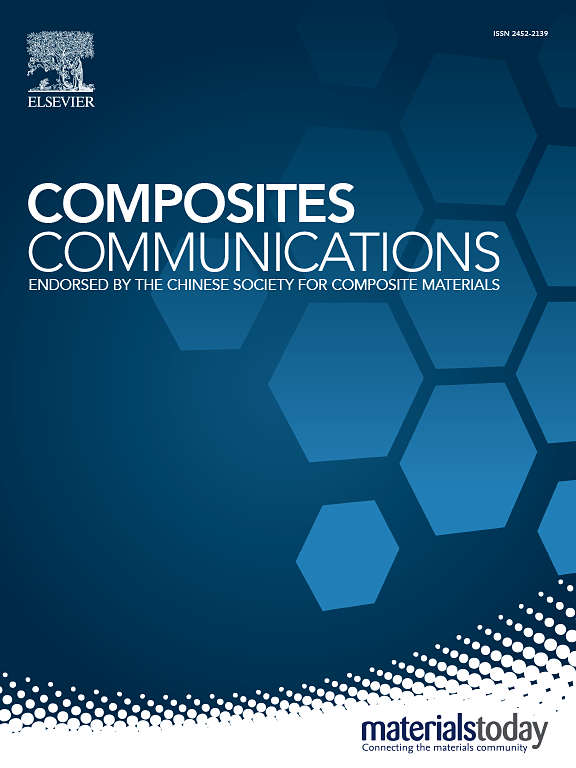Preparation and mechanical properties of aluminum-matrix composites with layered architecture
IF 6.5
2区 材料科学
Q1 MATERIALS SCIENCE, COMPOSITES
引用次数: 0
Abstract
Aluminum-matrix nanocomposites (AMCs) reinforced by SiC nanoparticles (SiCnp) were prepared by directional freezing combined with spark plasma sintering (SPS) and hot extrusion. The effect of SiCnp and layered structure on the microstructure and mechanical properties of SiCnp/Al nanocomposites was studied. The composite showed a layered structure consisting of SiCnp-rich and poor areas. With addition of 1 wt% SiCnp with average diameter 50 nm, the composite showed the best strength and toughness matching, with ultimate tensile strength (UTS) 326.2 MPa (35.4 % higher than that of homogeneous counterpart) and fracture elongation 8.6 %. The enhanced UTS in the layered nanocomposite was mainly attributed to the hetero-structure-induced formation of high density geometrically necessary dislocation (GND) in the near SiC-Al interface areas, which accordingly created pronounced hetero-deformation-induced (HDI) stress and work hardening capacity. The creation of layered architecture by feasibly directional freezing can advance the development of biomimetic layered composites with enhanced strength and toughness.
求助全文
约1分钟内获得全文
求助全文
来源期刊

Composites Communications
Materials Science-Ceramics and Composites
CiteScore
12.10
自引率
10.00%
发文量
340
审稿时长
36 days
期刊介绍:
Composites Communications (Compos. Commun.) is a peer-reviewed journal publishing short communications and letters on the latest advances in composites science and technology. With a rapid review and publication process, its goal is to disseminate new knowledge promptly within the composites community. The journal welcomes manuscripts presenting creative concepts and new findings in design, state-of-the-art approaches in processing, synthesis, characterization, and mechanics modeling. In addition to traditional fiber-/particulate-reinforced engineering composites, it encourages submissions on composites with exceptional physical, mechanical, and fracture properties, as well as those with unique functions and significant application potential. This includes biomimetic and bio-inspired composites for biomedical applications, functional nano-composites for thermal management and energy applications, and composites designed for extreme service environments.
 求助内容:
求助内容: 应助结果提醒方式:
应助结果提醒方式:


